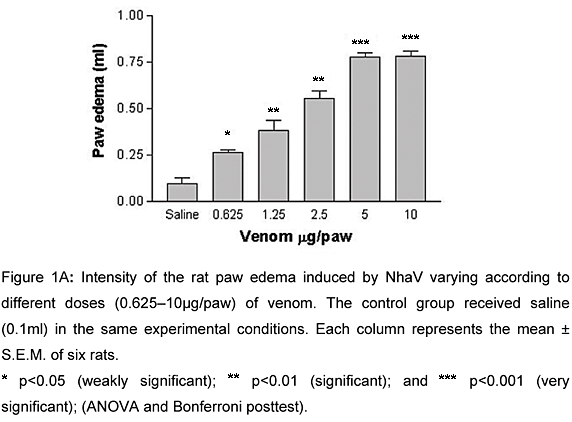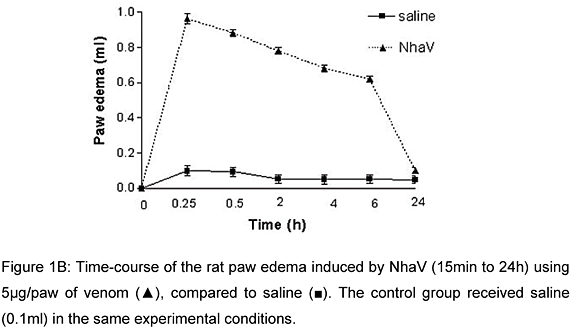This investigation was performed in order to assess the inflammatory response induced by Naja haje arabica venom (NhaV) in rat hind paw. The inflammatory response was estimated by measuring the edema with a Plethysmometer. The venom (0.625-10mug/paw) produced a dose and time-dependent increase in non-hemorrhagic paw edema. The response to NhaV was maximal within 15 min and disappeared in 24 h. Five mug/paw of NhaV was chosen to test the effect of various drugs on the edema induced by this venom. Quinacrine (QNC), a phospholipase A2 (PLA2) inhibitor, and dipyridamole (DPM), an adenosine transport inhibitor, attenuated venom-induced edema in rat paw (P<0.001). Commercially available antivenom was ineffective when administered intravenously, whereas its local administration with NhaV attenuated the edema formation (P<0.001). In conclusion, NhaV-induced edema in rat paw involves PLA2 and adenosine mechanisms. Additionally, the use of polyspecific antivenom, intravenously, was ineffective in preventing NhaV-induced edema.
rat paw edema; Naja haje arabica venom; inflammatory mediators; inhibitor; antivenom





